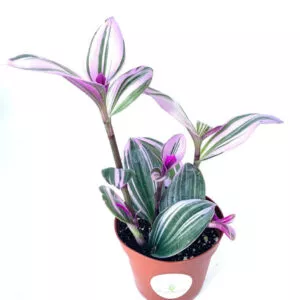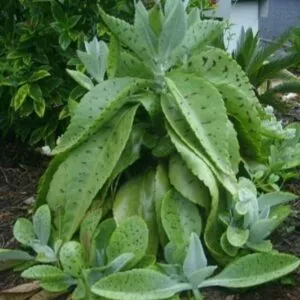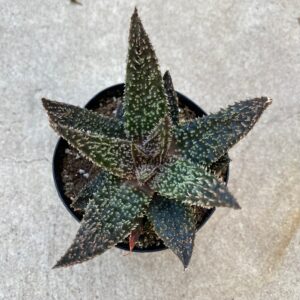No products in the cart.
Table of Contents
If you want a tree that grows slowly and adds evergreen color to the garden year-round, the Concolor fir tree is what you need. The trees can function as windbreaks in the landscape or grow as a privacy screen.
Still, developing the white fir in groups is best, as the pyramidal-shaped tree can experience some winter burn.
Key Takeaways:
- Soil: Thrives in sandy to gravelly soil conditions.
- Light: Prefers full sun to partial shade for optimal growth.
- Fertilizer: Benefits from organic matter for nourishment.
- Pruning: Requires pruning to achieve a pyramid shape, ideal for growing as a Christmas tree.
- Propagation: Propagated through hardwood cuttings for successful growth.
Abies Concolor Care Guide Table
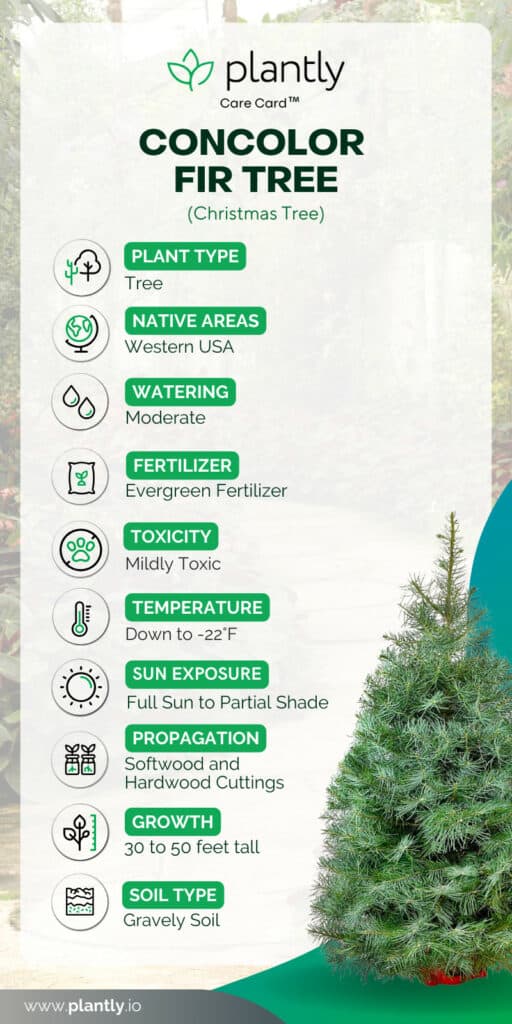
Facts About Abies Concolor
The white fir, known as the Christmas tree, is cherished for its year-round beauty. With blue-green needles and easy care, it adds charm to any garden.
These large evergreens, native to the western U.S., thrive in the Mid-Atlantic and Midwest, lasting up to 350 years. When young, they sport a pyramid shape, with varieties like the weeping white fir prized for wood and ornamental value.
Featuring soft needles and smooth gray bark, they grow slowly and produce erect cones in various colors. Belonging to the Pinaceae family, they’re commonly known as white fir trees.
Caring for Concolor Fir
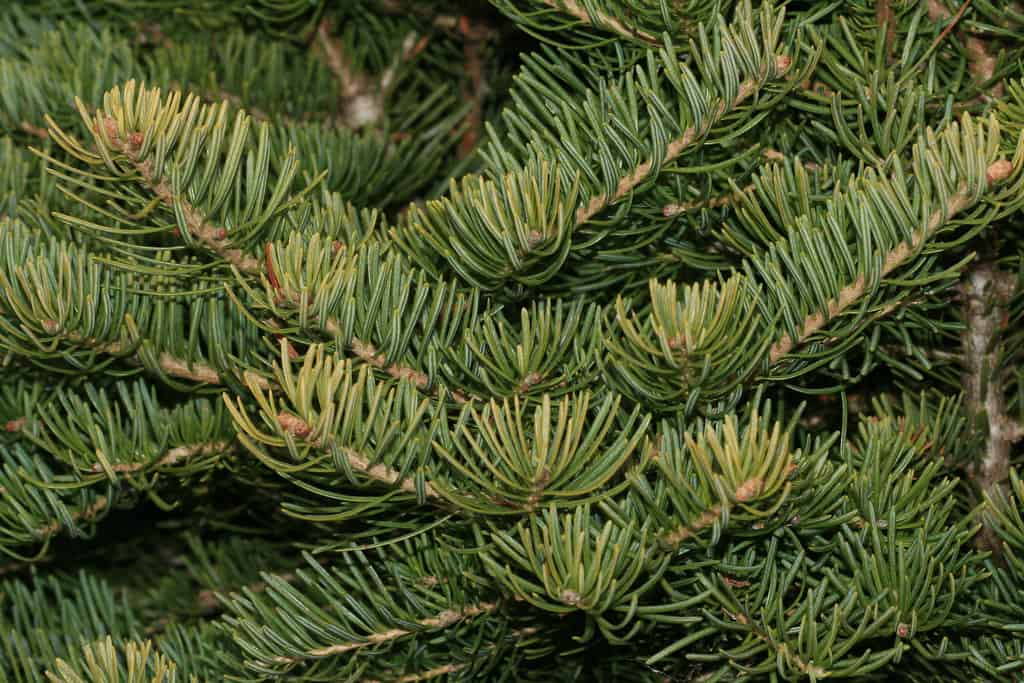
While the Abies concolor fir tree is a low-maintenance species, it does take loads of patience and space to grow it. So, when planting the tree, you need to plan your area, allowing it to grow happily into the future.
Thus, consider where your white fir will get the best light at the correct distance from building structures. So, if you live in the USDA hardiness zones 3-8, it can tolerate cold temperatures, but it is not a city tree as it cannot handle pollution in urban conditions.
The Best Soil For Abies Concolor Fir Tree
As your evergreen tree grows in mountainous regions, it thrives in sandy to gravelly soil. The tree adapts well to any condition but does not love standing water. So, well-drained soil allowing excess moisture to drain away is best.
The soil can also be slightly acidic, but we recommend adding sand when placing your tree in the ground if you have heavy clay.
Soil Moisture For
Once established, your tree can go without water for a while, so it helps provide it with the proper soil moisture when planted. Adding watering allows for healthy new growth in the first two years. As a guideline, your fir tree will need about ten gallons per inch of trunk diameter.
The Best Spot to Plant White Firs

Planting your Concolor fir in full sun to partial shade is best for this tree. The needles can burn while your trees are still young and stand in dry weather. Hence, if you do plant them in full sunlight, it helps to provide enough water.
So, find a spot with full sun to partial shade to protect your tree where possible. Then, you can plant your white fir from early spring to early summer.
Temperature and Humidity
When in the landscape, the evergreen tree handles warm temperatures and can thrive in dry air in the western United States during summer. Still, if temperatures plummet in late fall to winter, it can also handle those temperatures down to -22°F. Add some mulch around the base to protect your young tree’s roots.
Fertilizing Your Abies Concolor
Adding some organic matter to the well-drained soils and keeping your white fir in moist soil that is not soggy does not need added feeds. But you can fertilize your Abies concolor when young with a fertilizer made for evergreens. These can be slow-release spikes you can insert at the tree base.
Once your tree matures, it will not need any feeding.
In stock In stock In stock In stock
Free Shipping
$5.95
Sold By:
SunSoul Plants
$7.95Red Texas Star Hibiscus Seeds, Hibiscus coccineus seeds – 10+ seeds, free shipping
Rated 4.87 out of 5 based on 98 customer ratings00
Sold By:
SunSoul Plants
$25.45
Sold By:
Carlo's Plant Farm
Sinese Ligustrum | Carlo`s Plant Farm
Only 6 available and it’s in 1 people’s basket Rated 5.00 out of 5 based on 22 customer ratings00
Sold By:
Carlo's Plant Farm
$66.21
Sold By:
Carlo's Plant Farm
6 Crape Myrtle Muskogee | Carlo`s Plant Farm
Rated 5.00 out of 5 based on 22 customer ratings00
Sold By:
Carlo's Plant Farm
Free Shipping
$13.95
Sold By:
SunSoul Plants
$20.95Callisia Fragans, ‘Family Doctor’ live plant – in 4″ pot, free shipping
Rated 4.87 out of 5 based on 98 customer ratings00
Sold By:
SunSoul Plants
Pruning White Fir
There is no need to prune your white fir, but you can do some pruning to give it that pyramid shape if you want to grow it as a Christmas tree.
You can trim your tree from early spring to the beginning of summer to remove errant branches. To protect your tree from deer, some fencing is needed.
Propagation of Concolor Fir
The easiest way to propagate your white fir is through softwood or hardwood cuttings. The best time to take softwood cuttings is in spring; in late fall, you can take hardwood cuttings.
However, a softwood cutting tends to root faster, about four weeks, compared to six months using hardwood cuttings.
White Fir Varieties
You can grow many white fir varieties at a coast range or even in an open meadow to your outdoor living space.
Abies concolor ‘Compacta’
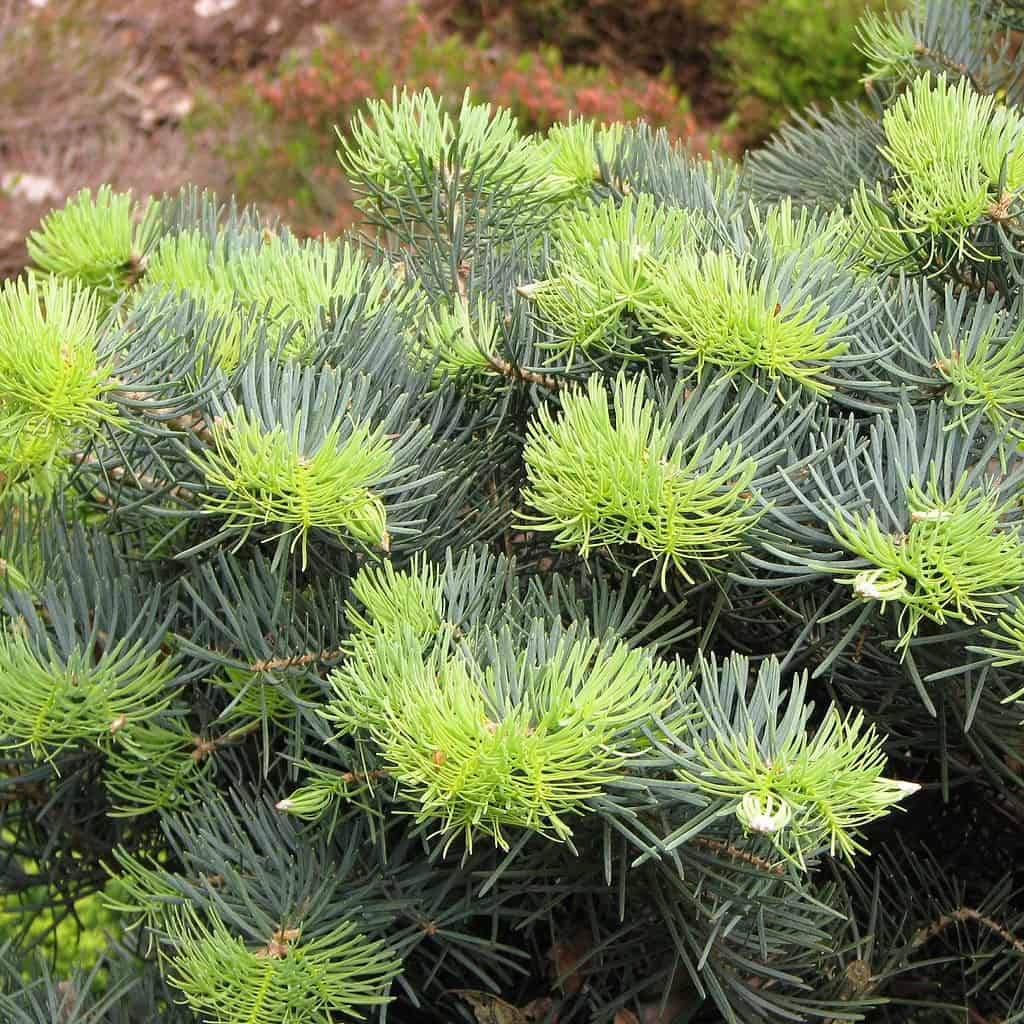
The white fir is a dwarf cultivar that is centuries old and grows with an oval shape. It also has blue-green needles and is slow growing, taking up to ten years to reach five feet tall.
Abies concolor ‘Candicans Nana’
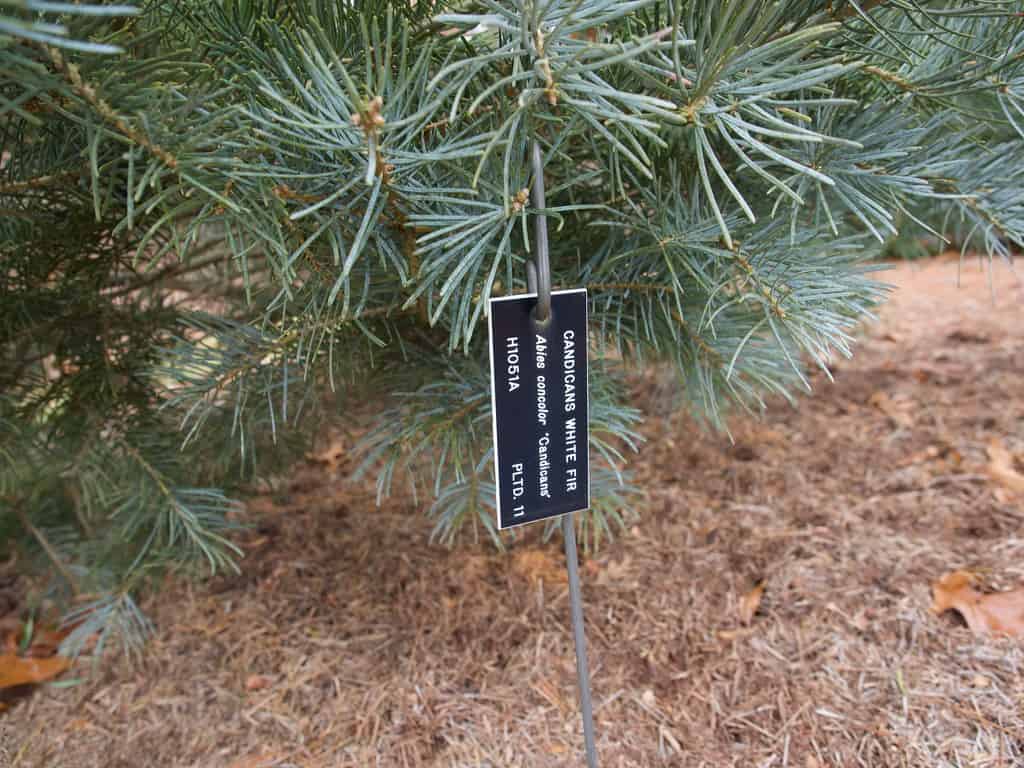
Another dwarf shrublike white fir is the Candicans Nana. When grown under the right conditions in the landscape, it reaches four feet tall and eight feet wide.
Abies concolor ‘Blue Cloak’
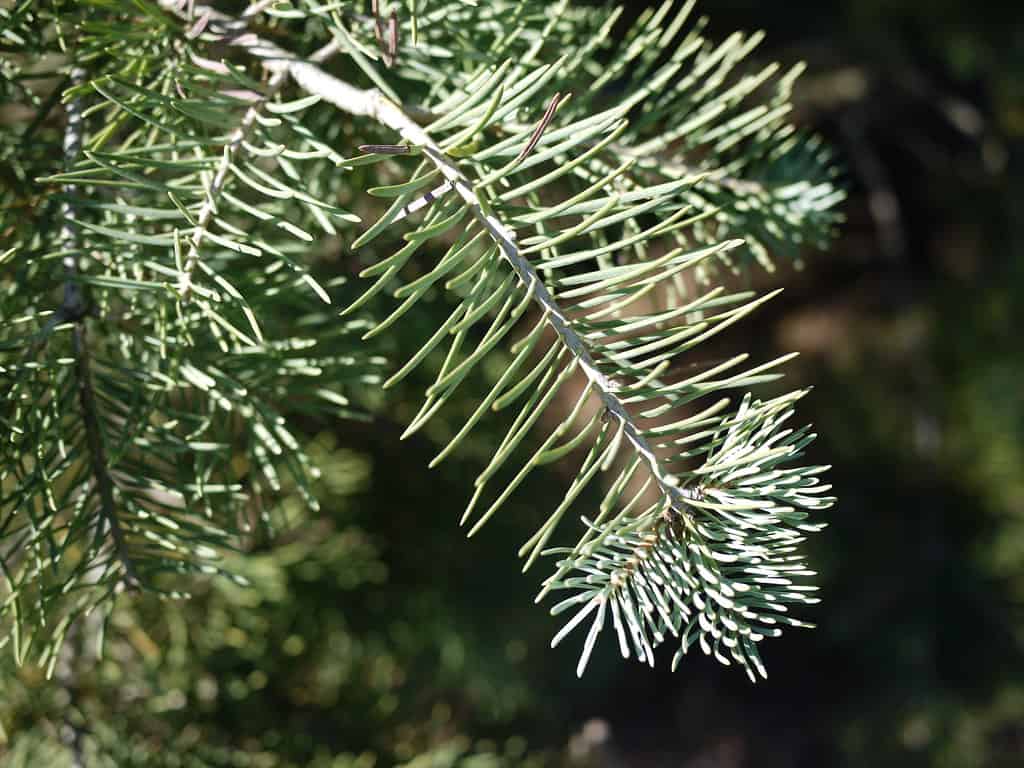
The Blue Cloak is a weeping white fir growing to eight feet with powder blue needles.
Pest and Disease Problems
The Concolor fir, while generally pest-resistant, can still attract insects and be susceptible to diseases. Common pests include the balsam twig aphid, budworms, scale insects, cotton cushions, and spider mites.
Diseases such as needle and twig blight, pine twig blight, and rust attacks can also affect the tree. Overwatering should be avoided to prevent root rot, as the Concolor fir prefers well-drained soil.
How to Grow White Fir From Seeds
Growing white fir from seed can be a lengthy process with variable outcomes. Follow these steps to increase your chances of success:
- Harvest seeds during late September or early October when the tree’s cones release them.
- Soak the seeds in water for 24 hours.
- Plant the seeds in moist soil or a mixture of peat and perlite.
- Optionally, stratify the seeds by refrigerating them for 60 days. This step can enhance germination but is not mandatory.
- If not stratifying, directly sow multiple seeds (10 to 15) in the ground or pots placed within a cold frame immediately after harvesting.
Frequently Asked Questions
The main difference between the two is the needle color and length. The Doubles branches look flimsy, drooping down compared to the white fir. In addition, the white fir has dark green-blue needles compared to the Douglas with light green needles.
Yes, deer are destructive in the Concolor fir and will need some protection, especially when still young.
When ingesting the oil, the fir wood is mildly toxic to animals and leads to vomiting.
The tree is not rare and is found in most local garden nurseries. But the good news is you can get your white fir tree here with us at Plantly.
Whether you want to buy, sell or simply reach out to other plant enthusiasts, Plantly is the right place to be!
In stock In stock (can be backordered) In stock
$9.99
Sold By:
Cacti and Exotica
Crassula ovata—Tricolor Jade
Rated 4.98 out of 5 based on 59 customer ratings00
Sold By:
Cacti and Exotica
Free Shipping
$19.99
Sold By:
Gar-Zen Botanical Design
Kalanchoe Gastonis bonnieri Donkey Ear Ships Free.
Only 7 available and it’s in 2 people’s basket Rated 4.86 out of 5 based on 49 customer ratings00
Sold By:
Gar-Zen Botanical Design
$44.99
Sold By:
Succulent Oasis
Medium Succulent Plant – Star Aloe ‘Tarantula’ Hybrid. An extremely rare and very limited Aloe.
Rated 4.84 out of 5 based on 352 customer ratings06
Sold By:
Succulent Oasis




